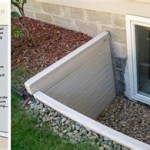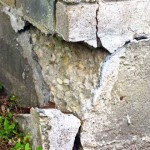How Much Does It Cost To Put A Sump Pump In Your Basement?
Basement flooding is a significant concern for homeowners, potentially leading to costly damage and health hazards. Installing a sump pump is a proactive measure that can effectively protect a basement from water intrusion. Understanding the costs associated with this installation is crucial for budgeting and making informed decisions. The overall cost of installing a sump pump in a basement can vary widely, influenced by several factors, including the type of pump, the complexity of the installation, and regional labor rates. This article provides a comprehensive overview of these cost factors.
Factors Influencing Sump Pump Installation Costs
Several key elements contribute to the total expense of installing a sump pump. These factors include the type of pump selected, the necessary excavation and plumbing work, and any additional services required to ensure proper drainage and functionality. Understanding these influences is essential for accurately estimating the overall investment required.
Type of Sump Pump: The type of sump pump chosen significantly impacts the overall cost. Sump pumps are generally categorized into two main types: pedestal and submersible. Pedestal pumps are positioned above the sump pit, with a hose extending into the pit. They are typically less expensive than submersible pumps but are also noisier and less efficient at removing water. Submersible pumps, on the other hand, are fully submerged in the sump pit. They are quieter, more efficient, and have a longer lifespan than pedestal pumps, but they come at a higher price point. The cost difference between these two types can range from $50 to $200 or more, depending on the brand and features.
Installation Complexity: The complexity of the installation process is another significant cost driver. A pre-existing sump pit can simplify the installation, reducing the labor required and, consequently, the overall expense. However, if a new sump pit needs to be excavated, the installation becomes more complex and time-consuming. This excavation involves breaking through the concrete basement floor, digging the pit to the appropriate depth, and installing a liner. The presence of obstructions, such as utility lines or large rocks, can further complicate the process and increase the cost. Additionally, connecting the pump to a discharge pipe that effectively directs water away from the foundation requires careful planning and execution. The length and routing of the discharge pipe, as well as the need for a backflow preventer, can also impact the final cost.
Additional Services and Materials: Beyond the pump itself and the basic installation, several additional services and materials may be necessary to ensure optimal performance. A backup power system, such as a battery backup or a generator, is highly recommended to protect against power outages, which often coincide with heavy rainfall and increased risk of flooding. The cost of a battery backup system can range from $150 to $500 or more, depending on the capacity and features. Similarly, a water alarm can provide an early warning of potential flooding, allowing homeowners to take proactive measures before significant damage occurs. The cost of a water alarm is relatively low, typically ranging from $10 to $50. Furthermore, proper grading around the foundation can help divert water away from the basement, reducing the strain on the sump pump. This may involve adding soil, installing drainage channels, or re-grading the landscape. These additional services and materials, while not always required, can significantly enhance the effectiveness of the sump pump system and prevent costly water damage in the long run.
Component Costs: Sump Pump and Accessories
Breaking down the costs into specific components provides a clearer understanding of the financial investment required. This includes the price of the sump pump itself, the sump pit (if needed), the discharge piping, and any necessary accessories like check valves and backup power systems.
Sump Pump Unit Price: As previously mentioned, the cost of the sump pump itself varies depending on the type, brand, and features. Pedestal pumps generally range from $50 to $200, while submersible pumps typically cost between $100 and $400 or more. Factors such as horsepower, flow rate, and construction materials can also influence the price. Higher horsepower pumps are capable of moving larger volumes of water, making them suitable for basements with a higher water table or a history of severe flooding. Pumps made from durable materials, such as cast iron or stainless steel, tend to have a longer lifespan and are less prone to corrosion.
Sump Pit and Liner: If a sump pit does not already exist, the cost of creating one must be factored into the overall expense. A pre-fabricated sump pit liner, typically made of plastic, can cost between $20 and $50. However, the labor involved in excavating the pit and installing the liner can significantly increase the cost. The depth and diameter of the pit will depend on the size of the pump and the anticipated water inflow. The excavation process may involve the use of specialized tools, such as a jackhammer, to break through the concrete floor. The disposal of the concrete debris and the backfilling of the pit also contribute to the overall cost.
Discharge Piping and Fittings: The discharge pipe is responsible for channeling water away from the foundation and preventing it from re-entering the basement. The cost of the discharge pipe and fittings depends on the length of the pipe, the material used, and the complexity of the routing. PVC pipe is a common choice for discharge piping, and its cost typically ranges from $0.50 to $2.00 per foot, depending on the diameter and quality. Fittings, such as elbows, couplings, and check valves, can add another $5 to $20 per piece. A check valve is essential to prevent backflow into the sump pit, which can damage the pump and lead to flooding. It is also important to ensure that the discharge pipe slopes away from the foundation to prevent water from pooling and seeping back into the basement.
Backup Power System (Optional but Recommended): Power outages during heavy rainfall are a common occurrence, rendering a standard sump pump useless. A backup power system can provide continuous operation during these critical times. Battery backup systems are a popular choice, and their cost ranges from $150 to $500 or more, depending on the battery capacity and features. The installation of a battery backup system typically involves connecting it to the sump pump and plugging it into a standard electrical outlet. Some systems also offer features such as automatic switching and alarm notifications. Alternatively, a generator can provide a more robust backup power solution, but it comes at a significantly higher cost. Portable generators range from $500 to $2000 or more, while whole-house generators can cost upwards of $5000. The installation of a whole-house generator requires professional expertise and may involve significant electrical and plumbing work.
Labor Costs and Regional Variations
Labor costs constitute a significant portion of the overall sump pump installation expense. These costs are influenced by factors such as the complexity of the installation, the plumber's hourly rate, and the geographic location.
Plumber's Hourly Rate: Plumbers' hourly rates vary widely depending on their experience, licensing, and geographic location. In general, expect to pay between $50 and $150 per hour for a licensed plumber. Complex installations, such as those requiring excavation or extensive plumbing modifications, may require more experienced plumbers and, consequently, higher hourly rates. It is always advisable to obtain multiple quotes from different plumbers to compare prices and ensure that you are getting a fair rate. Be sure to inquire about any additional fees, such as travel charges or emergency service fees.
Installation Time: The amount of time required to install a sump pump can vary significantly depending on the complexity of the job. A simple replacement of an existing sump pump might take only a few hours, while a more complex installation involving excavation and new plumbing could take a full day or longer. Factors such as the accessibility of the work area, the presence of obstructions, and the need for specialized tools can all impact the installation time. Before starting the project, it is helpful to discuss the estimated completion time with the plumber to avoid any unexpected delays or cost overruns.
Geographic Location: Labor costs can vary significantly depending on the geographic location. Areas with a higher cost of living, such as major metropolitan cities, tend to have higher labor rates. Conversely, rural areas typically have lower labor rates. The demand for plumbers in a particular area can also influence labor costs. During peak seasons, such as the spring and summer months when flooding is more common, plumbers may be in higher demand, driving up prices. It is always a good idea to research the average labor rates in your area to get a better sense of the expected costs.
Permits: Depending on local regulations, a permit may be required for sump pump installation. The cost of a permit can range from $50 to $200 or more, depending on the municipality and the scope of the project. It is the homeowner's responsibility to obtain the necessary permits before starting the installation. Failure to do so can result in fines and delays. The plumber can often assist with the permit application process. A permit ensures that the installation meets local building codes and safety regulations, providing added protection and peace of mind.
In summary, the cost of installing a sump pump can vary widely depending on the type of pump, the complexity of the installation, and the geographic location. It is essential to obtain multiple quotes from licensed plumbers and to carefully consider all of the associated costs before making a decision. Investing in a sump pump can provide valuable protection against basement flooding and prevent costly water damage.

How Much Does Sump Pump Installation Cost 2024 Guide Forbes Home

How Much Does It Cost To Replace Or Install A Sump Pump Homeserve Usa

How Much Does A Sump Pump Cost To Install Breaking Down Prices 2024 Bob Vila

How Much Does Sump Pump Installation Cost 2024 Guide

How Much Does A Sump Pump Cost To Install Breaking Down Prices 2024 Bob Vila

How Much To Install A Sump Pump Elek Plumbing

How Much Does It Cost To Install A Sump Pump

What Does It Cost To Install A Sump Pump Rcc Waterproofing News

Sump Pump Repair And Installation Me

Sump Pump Installation In Minneapolis Paul Bunyan
Related Posts







